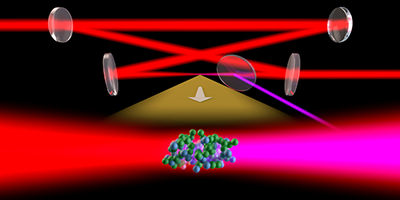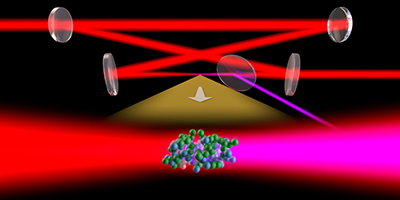Rapid Alignment
Molecules in a gas are aligned in random directions, but intense lasers can be used to deliver a torque to the molecules and align them towards the laser polarization. Preparing an aligned ensemble is important for studying chemical reactivity, imaging the molecule’s structure, or using the molecules to efficiently convert the laser frequency to short UV wavelengths. Now Craig Benko from the University of Colorado, Boulder, and colleagues have developed a technique that can align molecules at a rate one hundred thousand times larger than previously possible.
In the authors’ scheme, a pulse of light aligns a molecule by giving it a “kick” in a certain direction. This occurs through a Raman process, in which light scatters off a molecule leaving it in a rotationally excited state. The molecule then rotates in the direction it was kicked. After a certain delay, all the molecules will point in the same direction.
The authors injected a near-infrared frequency comb that pulsed million times a second into an optical cavity. They used a fraction of the beam to align the molecules and the rest to measure the alignment and generate high-order extreme ultraviolet (XUV) harmonics through extreme nonlinear effects in the molecules. The multipass cavity scheme enhanced the light-molecule interaction, increasing the sensitivity of the system. The synchronization of alignment with the laser, and the high-repetition rates achievable with this technique should allow for high-repetition-rate measurements to be performed, improving the experimental precision and statistics. The authors plan to use this technique to probe how alignment influences the generation of the XUV harmonics.
This research is published in Physical Review Letters.
–Katherine Wright





